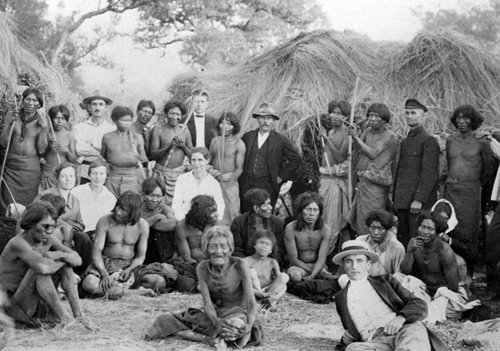Violence tore through this close-knit, traditionally pacifist community on the night of 11th March, 1944. All the more remarkable, its perpetrators and victims were all Mennonites. And they all belonged to rival Nazi factions.
Since the end of World War II, Mennonite-Nazi collaboration has largely been ignored, forgotten or intentionally repressed. In Paraguay, members of Mennonite congregations were forbidden from discussing the matter.
RECALLING THE PAST: German-speaking Mennonite refugees from the Soviet Union with indigenous neighbors near the Fernheim Colony in northwest Paraguay in 1930. PICTURE: Courtesy of Archiv der Kolonie Fernheim (Filadelfia, Paraguay)
“It is important that we consider facts, that we analyse and present events in a way that builds peace, both drawing on and propagating our Anabaptist inheritance.”
– Uwe Friesen, head of the Society for the History and Culture of the Mennonites in Paraguay
In Paraguay and beyond, the Nazi episode has been taboo for adherents of this Christian denomination that was founded in 16th-century Europe on principles of nonviolence and nonparticipation in politics.
Not until the 1980s, when an international search for Auschwitz physician Josef Mengele brought unwanted attention to the German-speaking Mennonite colony of Fernheim in Paraguay’s remote Gran Chaco, did that taboo begin to weaken.
Now Mennonites and others are probing that past in a series of conferences, the most recent of which took place last weekend in Filadelfia, administrative center of the colony.
Read the article by Ben Goossen in Sight Magazine.

